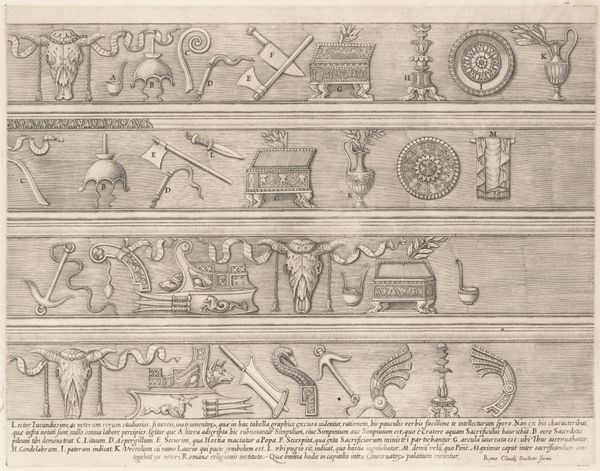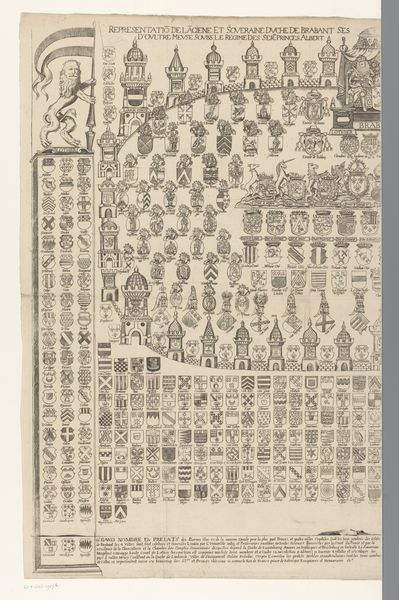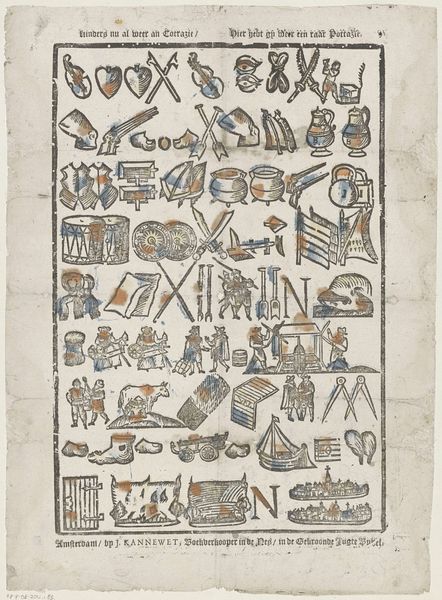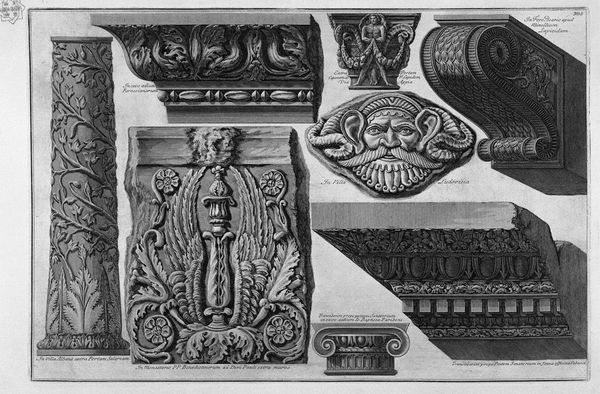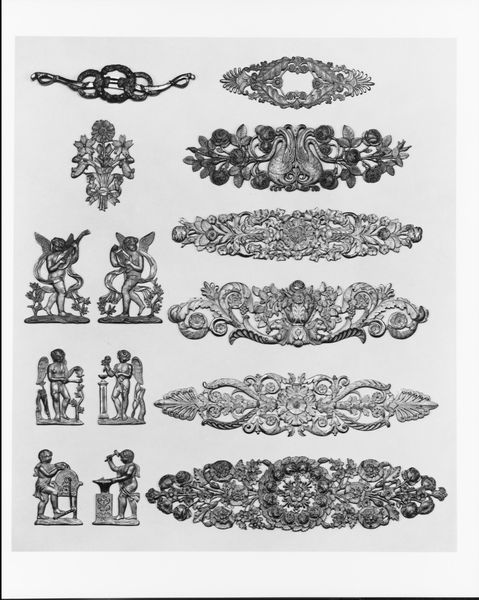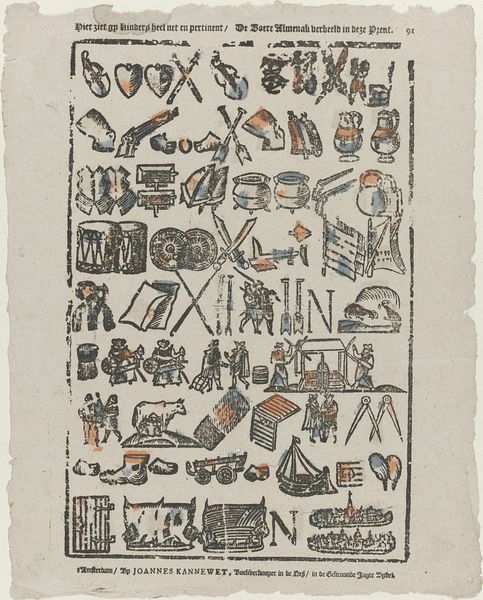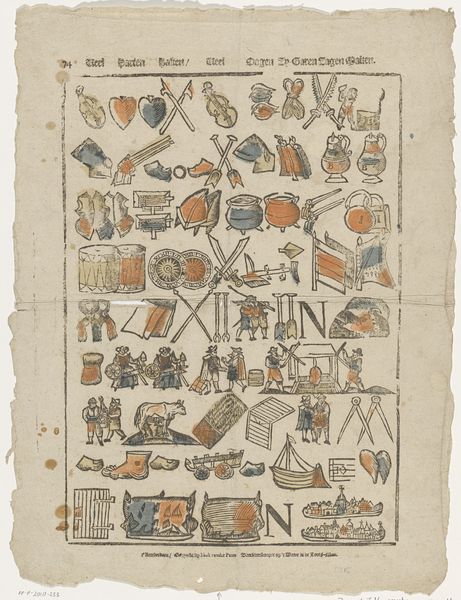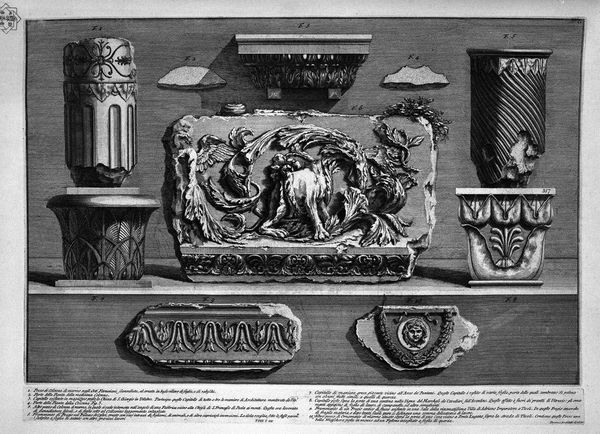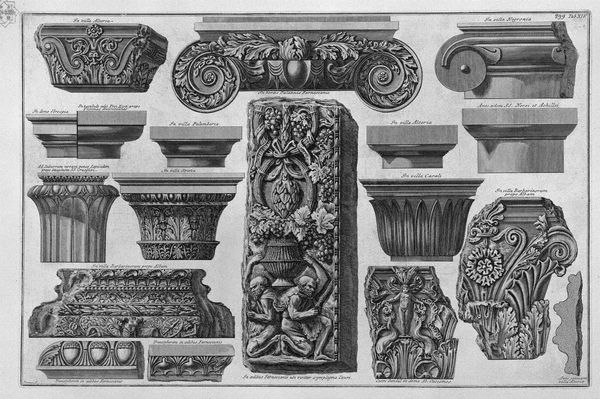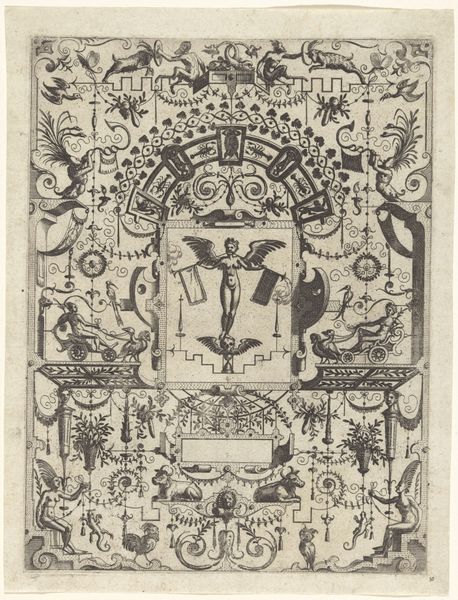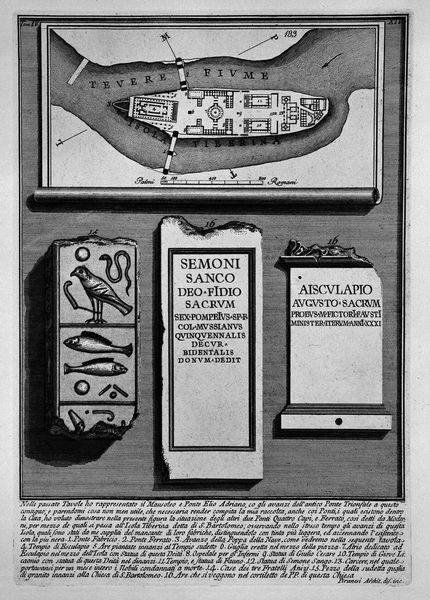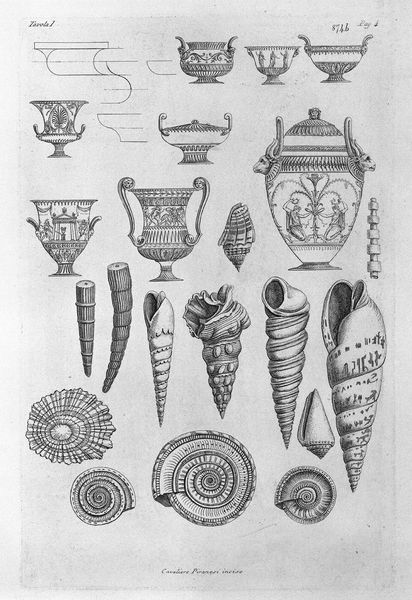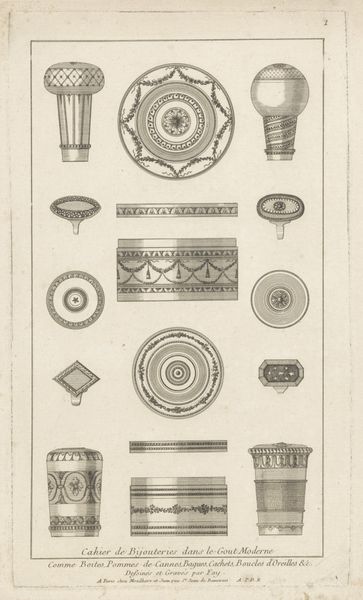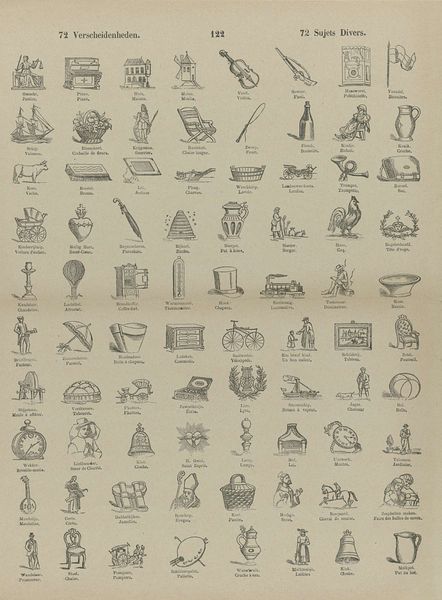
Etruscan monuments of various kinds relating to sacred uses, public, private, war, and ornaments used in the aforementioned sights (115 small incisions)
0:00
0:00
drawing, print, etching, ink, engraving, architecture
#
drawing
#
neoclacissism
# print
#
etching
#
old engraving style
#
form
#
text
#
ink
#
geometric
#
ancient-mediterranean
#
column
#
pen-ink sketch
#
line
#
sketchbook drawing
#
engraving
#
architecture
Copyright: Public domain
Curator: This print, entitled "Etruscan monuments of various kinds relating to sacred uses, public, private, war, and ornaments used in the aforementioned sights (115 small incisions)", presents a dense array of architectural fragments and artifacts. What’s your immediate reaction? Editor: An encyclopedia of long-lost cultural symbols! There is so much hidden knowledge here, coded in the shape of a column or a tiny ornament. Each object looks to hold emotional, ritualistic meaning. Curator: Indeed. Its production reveals much about the social context. Prints like these, meticulously etched, made the styles of antiquity accessible to a broader audience, shaping taste and influencing design far beyond Italy. It democratized access to visual forms and architectural motifs. Editor: That may be true. Yet, notice the prevalence of sacred iconography. What appears functional can also serve a deeper purpose. Observe, for instance, how consistently we find certain motifs used in what were either public, private or sacred contexts. The repeated eagle imagery—what could that suggest about power? Curator: We can’t overlook the impact of this meticulous linear style either. It suggests that precision and rationality, which were crucial values in neoclassical thought. It underscores how art and architecture during this time responded to a desire for systemizing. Editor: The question for me is, what was being systemized? Certainly a visual language and therefore a way of understanding the world around the viewer. Just look at item number 80; even the smallest object seems charged with cultural weight. The power of that tiny spiral, reimagined countless times throughout history. Curator: It’s also important to consider this sheet of incisions as a work object itself. The creation of such a print would require collaborative workshops, from initial sketch to etching, printing, and distribution. These artistic endeavors were intertwined with a wider material and economic reality. Editor: Well, however its creation, what persists through the print itself is the fascination with symbolic vocabularies of past civilizations. Through objects, meaning remains. Curator: So we are both seeing echoes of material culture and of memory, embedded in these objects, these relics from a different age. Editor: Precisely! Each meticulously rendered fragment— a testament.
Comments
No comments
Be the first to comment and join the conversation on the ultimate creative platform.
